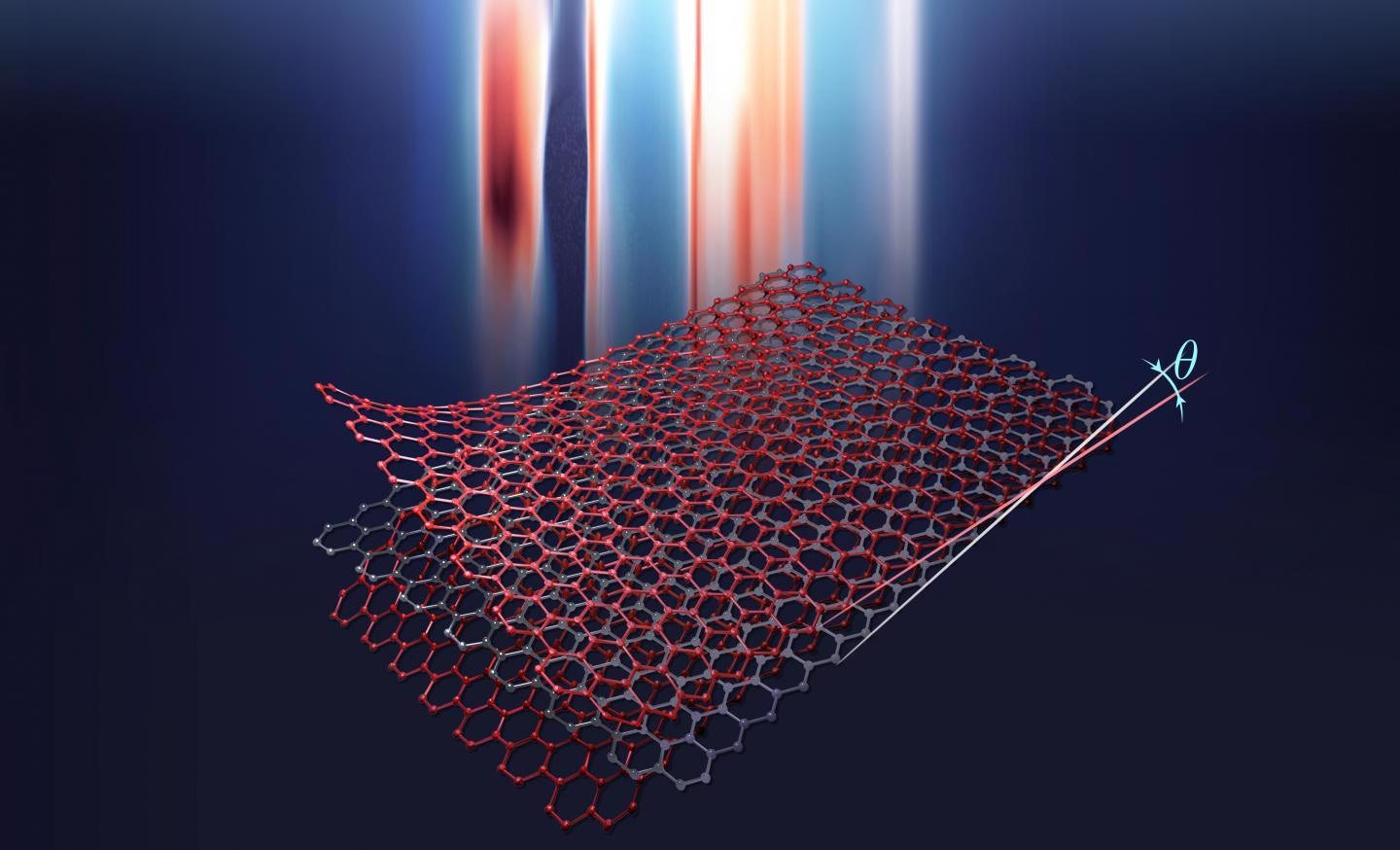Feb 5 2021
The breakthrough discovery of graphene had transformed the world of physics in 2018. Scientists had discovered that when an ultrathin carbon layer, known as graphene, is stacked together and twisted to a 'magic angle,' that novel double-layered structure changes into a superconductor, enabling electricity to flow without energy waste or any kind of resistance.
 Artist rendition of twisted trilayer graphene. Image Credit: Polina Shmatkova and Margarita Davydova.
Artist rendition of twisted trilayer graphene. Image Credit: Polina Shmatkova and Margarita Davydova.
In what seemed to be a literal twist, Harvard University researchers have now taken that superconducting system to a whole new level by adding a third layer and rotating it, paving the way for continued developments in graphene-based superconductivity.
The study has been detailed in a new article published in the Science journal and may, someday, lead to the development of superconductors that work at higher temperatures or even close to room temperatures.
Such superconductors are regarded as the holy grail of condensed matter physics, because they would enable immense technological revolutions in several areas, such as quantum computing, transportation and electricity transmission.
Today, the majority of the superconductors, such as the double-layered graphene structure, operate only at extremely cold temperatures.
Superconductivity in twisted graphene provides physicists with an experimentally controllable and theoretically accessible model system where they can play with the system's properties to decode the secrets of high temperature superconductivity.
Andrew Zimmerman, Study Co-Lead Authors and Postdoctoral Researcher, Harvard University
Zimmerman works in the laboratory of Philip Kim, a physicist from Harvard University.
Graphene—a one-atom-thick layer of carbon atoms—is 200 times stronger than that of steel and yet it is extremely lighter and flexible than paper. Graphene has almost always been identified as an excellent conductor of electrical current and heat but also equally hard to handle.
A number of experiments revealing the mystery of twisted bilayer graphene have been continuing ever since MIT physicist Pablo Jarillo-Herrero and his team established the evolving field of 'twistronics' with their experiment earlier in 2018, during which they created the graphene superconductor by stacking and twisting it to a magic angle of 1.1 degrees.
Going one step ahead, the team from Harvard University have now effectively stacked three graphene sheets and subsequently twisted each of these sheets at that magic angle to create a three-layered structure that not only delivers superconductivity and also does so more powerfully and at higher temperatures than the majority of the double-stacked graphene.
Besides this, the new, enhanced system is sensitive to an externally applied electric field that enables the researchers to adjust the degree of superconductivity by tuning the strength of that electric field.
It enabled us to observe the superconductor in a new dimension and provided us with important clues about the mechanism that's driving the superconductivity.
Zeyu Hao, Study Co-Lead Author and PhD Student, Graduate School of Arts and Sciences, Harvard University
Hao also works in the Kim Group.
The theorists were truly excited by one of these mechanisms. The trilayer system demonstrated evidence that its superconductivity is the result of powerful interactions between electrons as opposed to the weak ones. If this turns out to be true, this would not only pave the way to high-temperature superconductivity but would also lead to potential applications in the field of quantum computing.
In most conventional superconductors, electrons move with a high speed and occasionally cross-paths and influence each other. In this case, we say their interaction effects are weak.
Eslam Khalaf, Study Co-Author and Postdoctoral Fellow, Harvard University
Khalaf works in the laboratory of Ashvin Vishwanath, a physics professor from Harvard University.
“While weakly interacting superconductors are fragile and lose superconductivity when heated to a few Kelvins, strong coupling superconductors are much more resilient but much less understood. Realizing strong coupling superconductivity in a simple and tunable system such as trilayer could pave the way to finally develop a theoretical understanding of strongly-coupled superconductors to help realize the goal of a high temperature, maybe even room temperature, superconductor.”
The team has now planned to continue to explore the nature of this unique superconductivity in additional research works.
“The more we understand, the better we have chance to increase the superconducting transition temperatures,” Kim concluded.
Journal Reference:
Hao, Z., et al. (2021) Electric field tunable superconductivity in alternating twist magic-angle trilayer graphene. Science. doi.org/10.1126/science.abg0399.